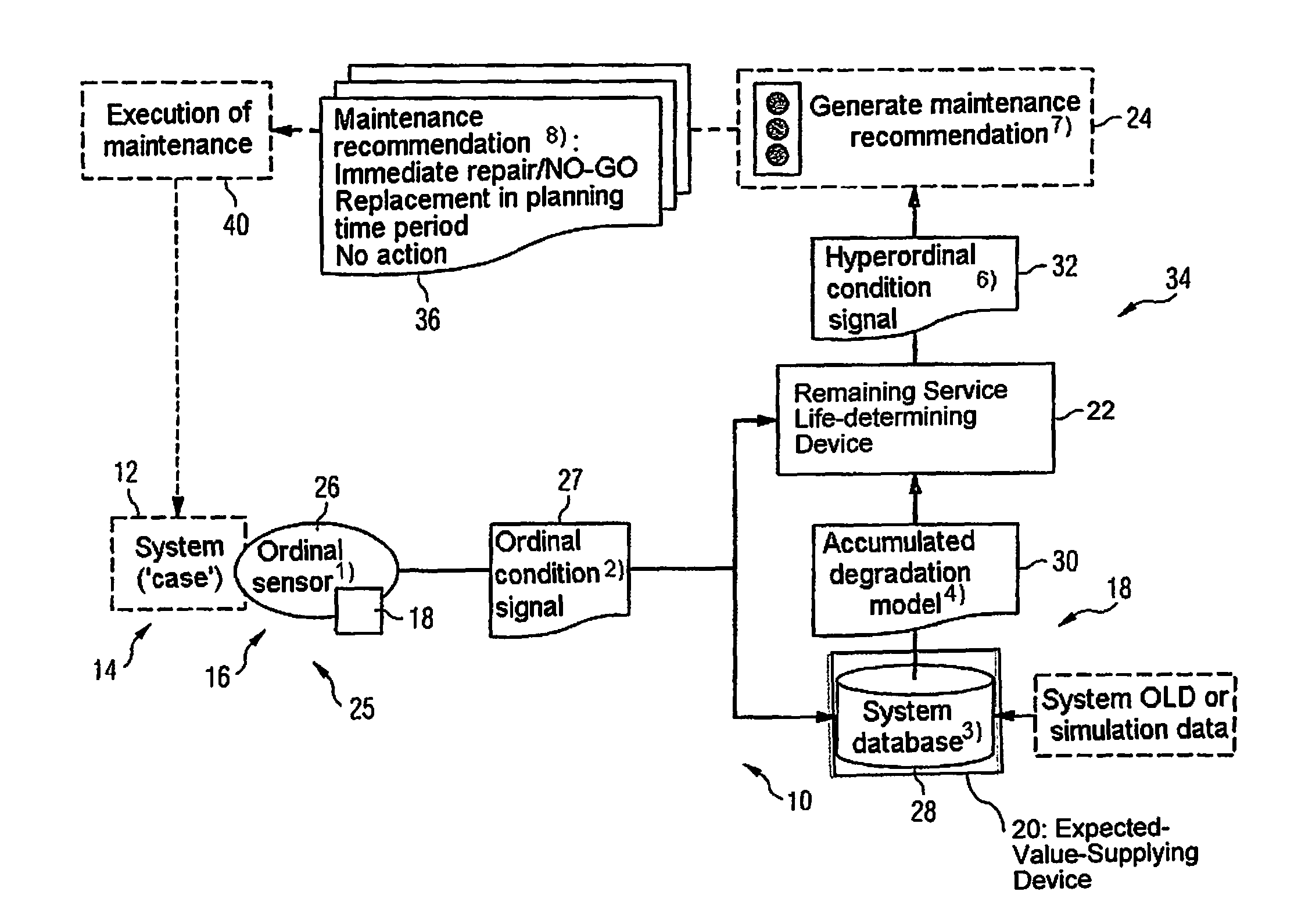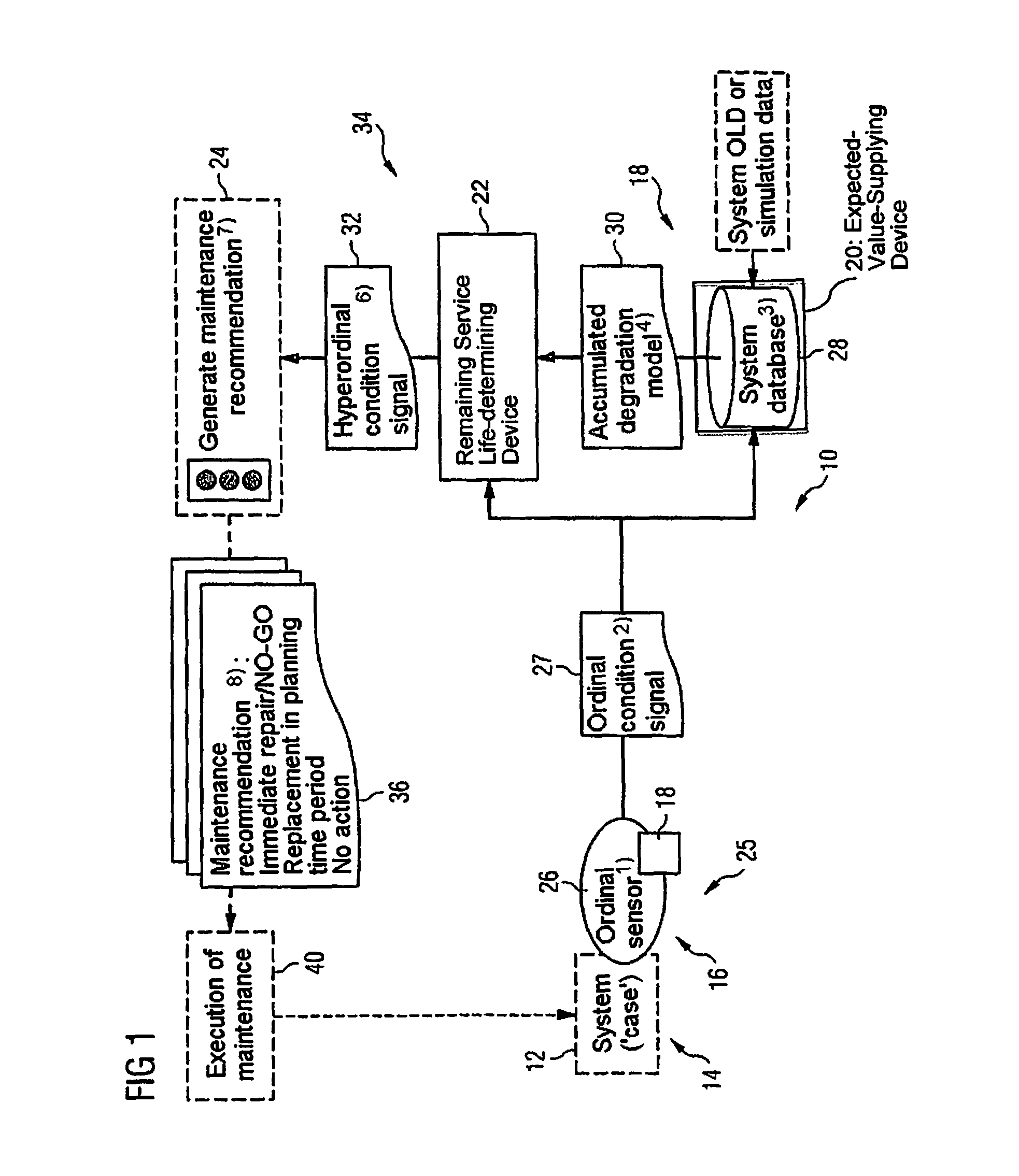Maintenance information device, condition sensor for use therein and method which can be carried out therewith for arriving at a decision whether or not to perform servicing or maintenance
a technology of condition sensor and maintenance information, which is applied in the direction of electric testing/monitoring, process and machine control, instruments, etc., can solve the problems of an expected increase in maintenance work, particularly maintenance-intensive technology, and distant objectives which cannot yet be implemented, so as to reduce entropy, complex design, and increase development and operating costs
- Summary
- Abstract
- Description
- Claims
- Application Information
AI Technical Summary
Benefits of technology
Problems solved by technology
Method used
Image
Examples
Embodiment Construction
[0050]FIG. 1 is a schematic illustration of a maintenance information device 10 and of a flowchart for the functioning thereof in the form of an algorithm which is illustrated as a block diagram. The maintenance information device 10 serves to supply information for arriving at a decision as to whether or not maintenance should be performed on a condition-monitored technical system 12.
[0051]The technical system 12 can be any equipment or component which has to be maintained. Examples of such technical systems can be found in the literature and patent literature on condition-based maintenance which is mentioned at the beginning. In one preferred exemplary embodiment, the monitored technical system 12 is a component 14 or a piece of equipment of an aircraft. Examples of such components are structural elements of the rear or of wings or of tailplane fins, propulsion units or propulsion unit components, air conditioning systems, cooling systems, life support systems, rescue equipment, c...
PUM
 Login to View More
Login to View More Abstract
Description
Claims
Application Information
 Login to View More
Login to View More - R&D
- Intellectual Property
- Life Sciences
- Materials
- Tech Scout
- Unparalleled Data Quality
- Higher Quality Content
- 60% Fewer Hallucinations
Browse by: Latest US Patents, China's latest patents, Technical Efficacy Thesaurus, Application Domain, Technology Topic, Popular Technical Reports.
© 2025 PatSnap. All rights reserved.Legal|Privacy policy|Modern Slavery Act Transparency Statement|Sitemap|About US| Contact US: help@patsnap.com



